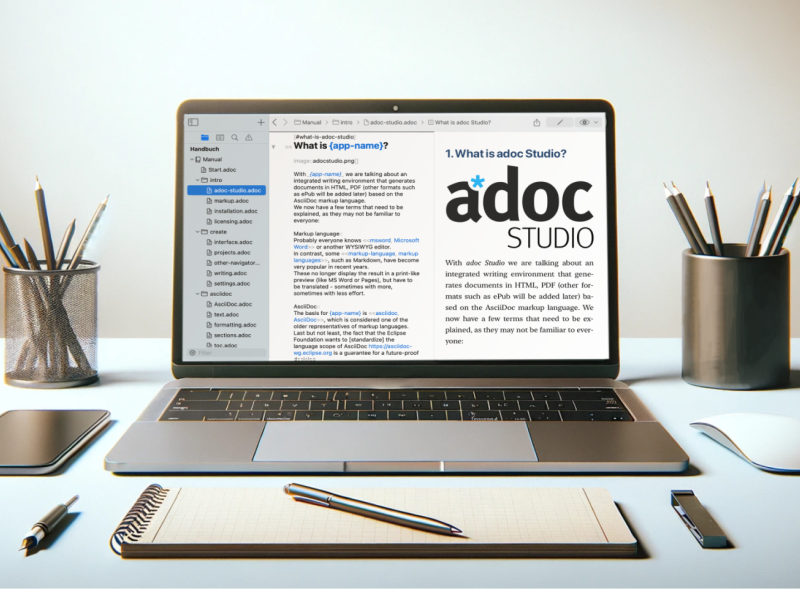Posted in technical writing.
The Process of Tech Writing: From Planning to Proofreading
Antoni Cherif – .
Technical writing demands clear planning and precise steps to communicate complex information effectively.
Technical writing projects—whether manuals, online help guides, or software documentation—require a structured approach to deliver information clearly and effectively. Using tools like adoc Studio can streamline this process, enhancing organization and consistency in complex documentation. The key stages in the technical writing process include planning, researching and drafting, revising and editing, and finally, proofreading and testing. Here’s a closer look at each step:

1. Planning: Laying the Foundation
Planning is the foundation of any technical documentation. A well-thought-out plan provides structure and direction, making the writing process more efficient and focused. Key elements of this stage include:
Audience Analysis: Who will read the document? Are they beginners, experts, or people with specific knowledge? Knowing this influences the tone and level of detail.
Objectives and Scope: What is the purpose of the documentation? Is it to explain an application, describe an API, or provide troubleshooting guidance? A clear objective and defined scope help maintain focus and prevent misunderstandings.
Outline Creation: Creating an outline or table of contents helps organize the flow of information in a logical way.
 adoc Studio
adoc Studio
Organize, Write and Share.
Documentation in AsciiDoc.
Organize, Write and Share.
2. Research & Drafting: Gathering Information and Structuring
With a clear plan, it’s time to gather information and create the first draft.
Research: The facts must be precise and up-to-date. Interviews with developers or subject matter experts, along with reviewing existing documentation, often yield valuable content.
Creating the Rough Draft: This draft serves as the foundation and may still be “raw” and unfinished. The priority here is to ensure all relevant information is included, even if it's not yet perfectly worded. Aim for clarity and simplicity, minimizing jargon wherever possible.
Incorporating Media: If screenshots, diagrams, or videos supplement the text, they should be placed strategically to enhance understanding.

3. Revising & Editing: Achieving Precision and Clarity
After the initial draft, the revising stage is where the text is refined for precision, logic, and readability.
Content Clarity: Are all the facts accurate? Are any key points missing? The revision should critically assess every sentence.
Structure and Logic: Ensure the information flows logically and that there’s a clear thread throughout the document.
Consistency: Technical texts should maintain a consistent style and terminology. Any term or abbreviation introduced should be used uniformly throughout the document.

4. Proofreading & Testing: Removing Final Errors
The final stage of technical writing focuses on eliminating errors and ensuring functionality.
Proofreading: Comprehensive proofreading catches typos, grammatical errors, and stylistic weaknesses.
Usability Testing: Testing is critical in technical writing. Have individuals from the target audience read the document and provide feedback. This is particularly useful in determining whether instructions and explanations are clear and practical.
Ensuring Up-to-Date Information: In the tech world, content changes quickly. It’s essential to ensure that the document is current and reflects the latest information.
Conclusion
The process of technical writing demands precision, planning, and a strong understanding of the audience. By following each phase carefully—from planning to testing—you create documentation that supports readers in their work and communicates technical information in a clear, understandable way.
You might also like
-
AsciiDoc in Comparison
- Marvin Blome
- Published on
-
Markup versus WYSIWYG
- Marvin Blome
- Published on
-




